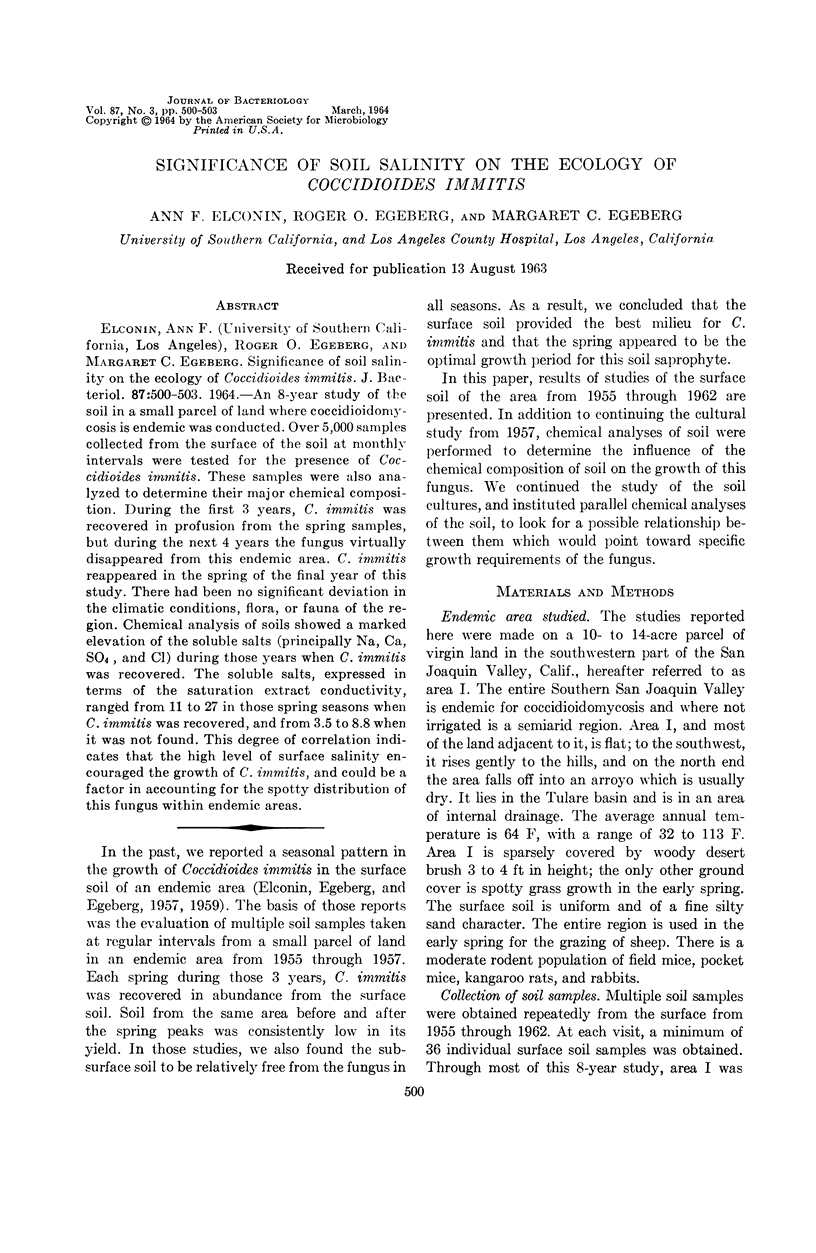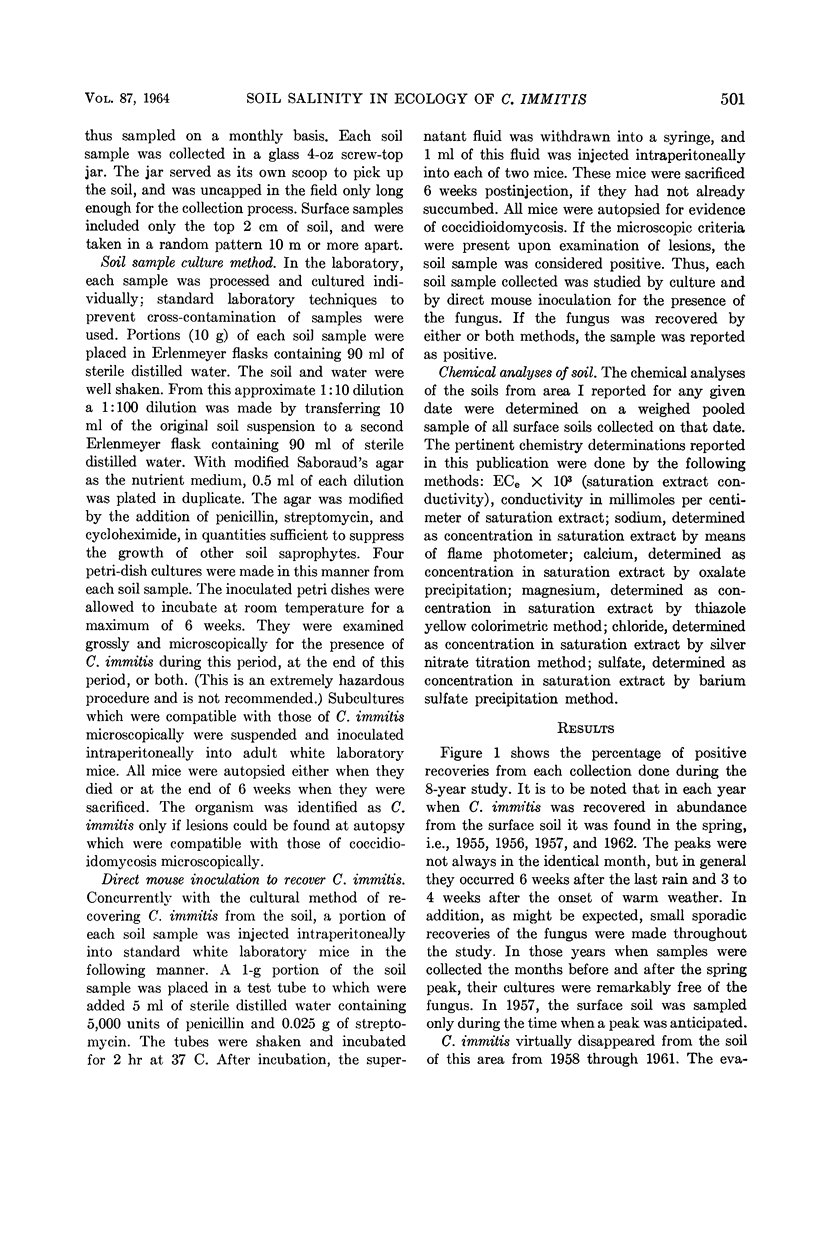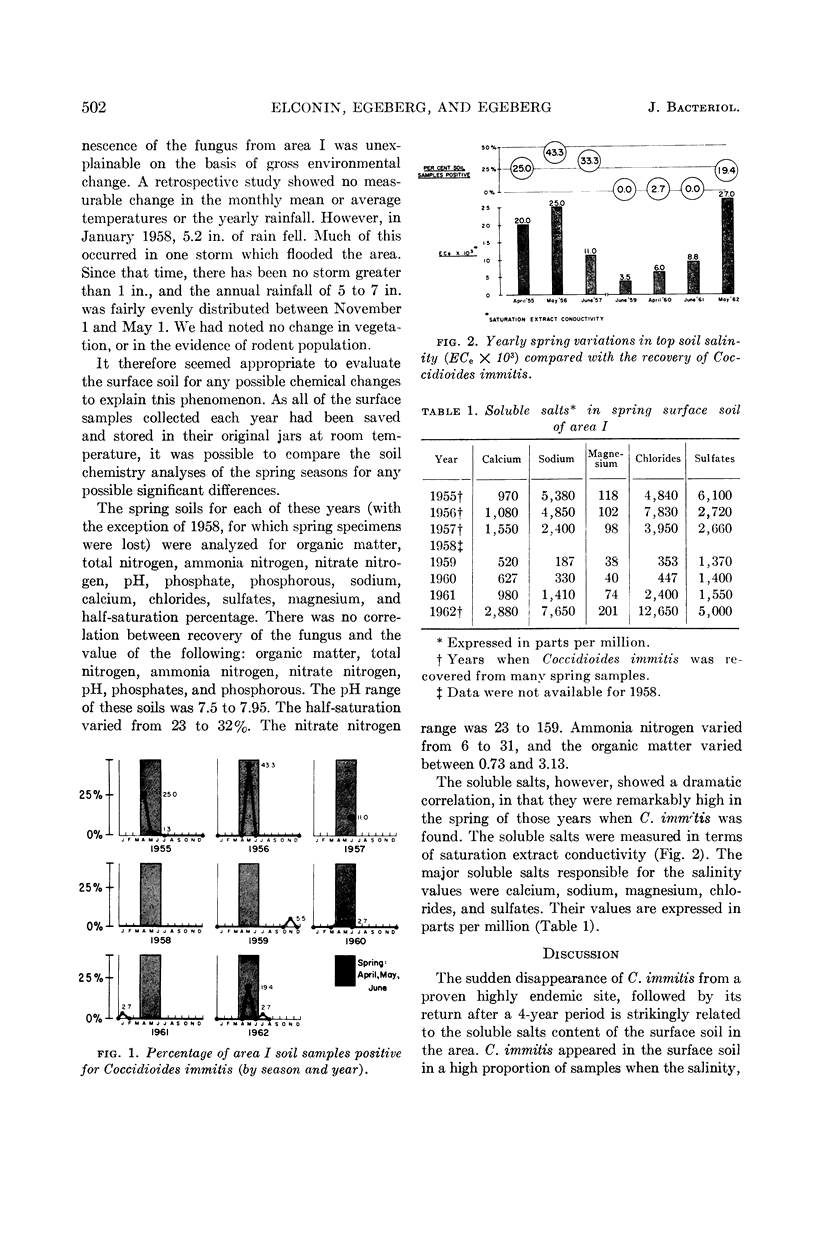Abstract
Elconin, Ann F. (University of Southern California, Los Angeles), Roger O. Egeberg, and Margaret C. Egeberg. Significance of soil salinity on the ecology of Coccidioides immitis. J. Bacteriol. 87:500–503. 1964.—An 8-year study of the soil in a small parcel of land where coccidioidomycosis is endemic was conducted. Over 5,000 samples collected from the surface of the soil at monthly intervals were tested for the presence of Coccidioides immitis. These samples were also analyzed to determine their major chemical composition. During the first 3 years, C. immitis was recovered in profusion from the spring samples, but during the next 4 years the fungus virtually disappeared from this endemic area. C. immitis reappeared in the spring of the final year of this study. There had been no significant deviation in the climatic conditions, flora, or fauna of the region. Chemical analysis of soils showed a marked elevation of the soluble salts (principally Na, Ca, SO4, and Cl) during those years when C. immitis was recovered. The soluble salts, expressed in terms of the saturation extract conductivity, ranged from 11 to 27 in those spring seasons when C. immitis was recovered, and from 3.5 to 8.8 when it was not found. This degree of correlation indicates that the high level of surface salinity encouraged the growth of C. immitis, and could be a factor in accounting for the spotty distribution of this fungus within endemic areas.
Full text
PDF



Selected References
These references are in PubMed. This may not be the complete list of references from this article.
- EGEBERG R. O., ELY A. F. Coccidioides immitis in the soil of the southern San Joaquin Valley. Am J Med Sci. 1956 Feb;231(2):151–154. [PubMed] [Google Scholar]


